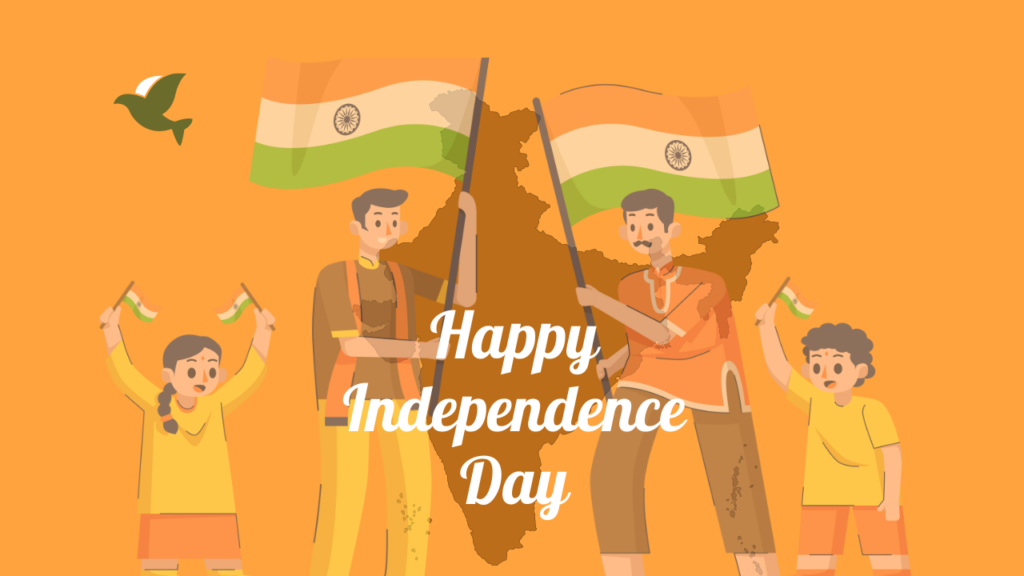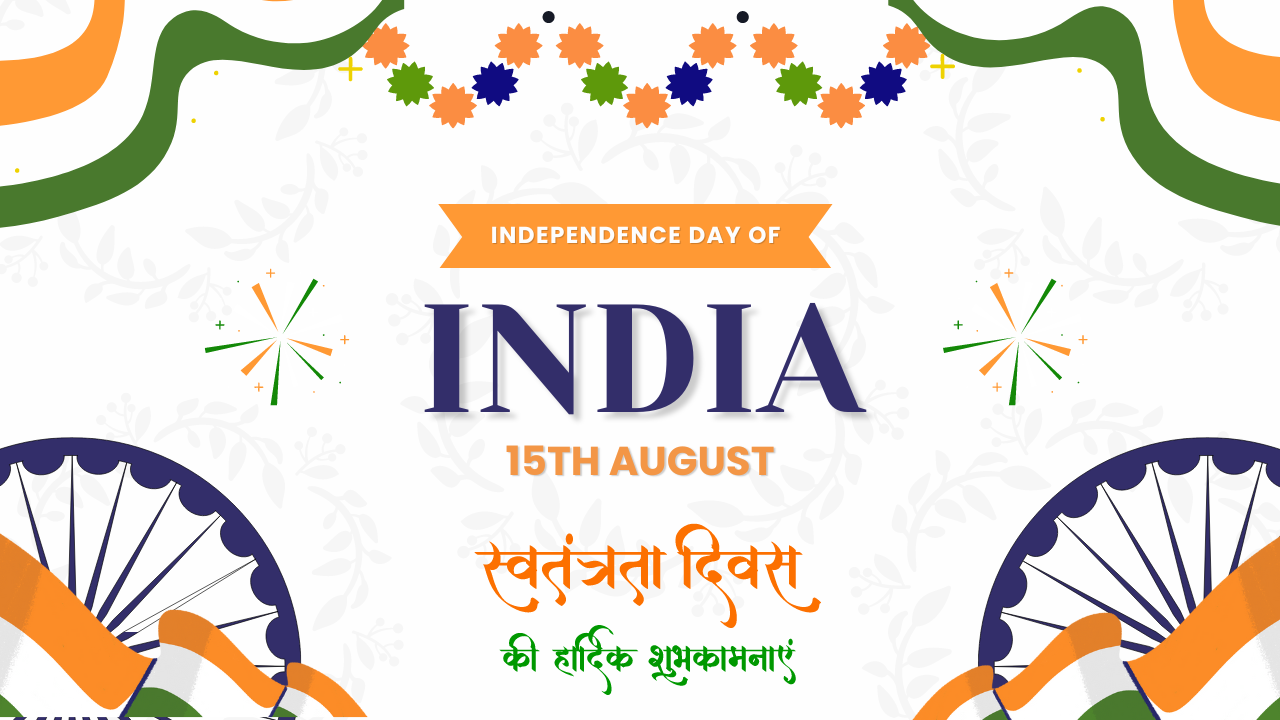Introduction
Indian Independence Day, observed annually on August 15th, is a momentous occasion that marks the end of British rule in 1947 and the birth of a sovereign nation. It is a day of national pride, celebration, and reflection, reminding us of the sacrifices made by countless freedom fighters and the enduring spirit of unity and resilience that defines India. This blog post delves into the history, significance, and ways of celebrating Indian Independence Day, offering a comprehensive look at this historic event.
Traditions
Independence Day is marked by various traditional ceremonies and activities across the country:

Flag Hoisting: The day begins with the Prime Minister hoisting the national flag at the Red Fort in Delhi, followed by a speech addressing the nation. This event is broadcast live and is watched by millions across the country.
Parades and Cultural Programs: Various cultural programs, parades, and performances are held in schools, colleges, and other institutions. These programs often include patriotic songs, dances, and plays that depict the freedom struggle.
Patriotic Songs and Movies: Patriotic songs and movies are played on television and radio, evoking a sense of pride and nostalgia. Classics like “Vande Mataram” and “Maa Tujhe Salaam” resonate deeply with the spirit of the day.
Lighting and Decorations: Public buildings, homes, and landmarks are often illuminated with the colors of the Indian flag—saffron, white, and green. The decorations add to the festive atmosphere, celebrating the nation’s vibrant culture and heritage.
Independence Day is a day of national pride, reflection, and celebration. It honors the past while inspiring the present and future generations to work towards stronger, more unified India.
Table of Contents
A Glimpse into History

The British East India Company first established its presence in India in the early 17th century, gradually expanding its control over large parts of the subcontinent. By the mid-19th century, India had come under the direct rule of the British Crown. The struggle for independence, however, had already begun, with early movements like the Revolt of 1857, also known as the First War of Indian Independence, setting the stage for a long and arduous battle for freedom.
The late 19th and early 20th centuries saw the rise of several prominent leaders who played pivotal roles in the independence movement. Mahatma Gandhi, with his philosophy of non-violence and civil disobedience, emerged as a central figure, leading mass movements like the Non-Cooperation Movement, the Civil Disobedience Movement, and the Quit India Movement. Alongside Gandhi, leaders like Jawaharlal Nehru, Sardar Vallabhbhai Patel, Subhas Chandra Bose, and many others made significant contributions to the cause.
The culmination of these efforts came on August 15, 1947, when India was finally granted independence from British rule. Jawaharlal Nehru, the first Prime Minister of independent India, delivered his iconic “Tryst with Destiny” speech, marking the dawn of a new era for the nation.
Significance of Indian Independence Day

Indian Independence Day is not just a commemoration of the country’s liberation from colonial rule; it is a celebration of the values and ideals that the nation stands for—democracy, unity in diversity, secularism, and the relentless pursuit of progress and development. The day serves as a reminder of the sacrifices made by freedom fighters who laid down their lives for the nation’s sovereignty.
Independence Day also highlights the importance of national unity and the need to bridge social, economic, and cultural divides. India’s diverse population, comprising different religions, languages, and ethnicities, comes together on this day to reaffirm their commitment to the nation’s progress and well-being.
Celebrations Across the Country
The day begins with the hoisting of the national flag, a tradition observed in schools, colleges, government institutions, and public spaces. The national anthem, “Jana Gana Mana,” composed by Rabindranath Tagore, is sung with pride, invoking a sense of national unity.
The central event takes place at the Red Fort in Delhi, where the Prime Minister hoists the national flag and delivers a speech to the nation. This address highlights the government’s achievements, outlines future goals, and pays tribute to the freedom fighters who made India’s independence possible. The ceremony at the Red Fort is followed by a grand parade featuring cultural performances, showcasing India’s rich heritage and diversity.
In addition to the official celebrations, citizens participate in various activities to mark the occasion. Educational institutions organize cultural programs, debates, and essay competitions on themes related to the independence movement. Patriotic songs and dances, street plays, and flag-hoisting ceremonies are held in neighborhoods and communities, fostering a sense of camaraderie and national pride.
The Role of Technology in Modern Celebrations
In recent years, technology has played an increasingly significant role in Independence Day celebrations. Social media platforms are abuzz with messages of patriotism, with people sharing quotes, images, and videos commemorating the occasion. Virtual events, webinars, and online campaigns are organized, allowing people from different parts of the country and the world to participate in the celebrations.
The Spirit of Patriotism

Patriotism is at the heart of Independence Day celebrations. It is a day when Indians come together to express their love and respect for the nation. From wearing clothes in the colors of the national flag to decorating homes and streets with tricolor decorations, the spirit of patriotism is palpable.
Patriotism, however, is not limited to symbolic gestures. It is also about contributing to the nation’s growth and development in meaningful ways. Independence Day serves as a reminder to every citizen of their responsibility towards the country. Whether it’s through community service, environmental conservation, or supporting local businesses, every act of kindness and service contributes to the nation’s progress.
Challenges and the Road Ahead
As India celebrates its independence, it is important to reflect on the challenges that lie ahead. While the country has made significant strides in various fields, there are still issues that need to be addressed. Economic inequality, gender discrimination, communal tensions, and environmental challenges are some of the pressing concerns that require collective effort and determination.
The younger generation, in particular, has a crucial role to play in shaping the future of the nation. With access to education, technology, and global opportunities, they have the potential to drive positive change and contribute to India’s development. Independence Day is an occasion to inspire young minds to take up the mantle of leadership and work towards building a stronger, more inclusive, and prosperous India.
Conclusion
Indian Independence Day is a celebration of freedom, unity, and the indomitable spirit of the people. It is a day to honor the sacrifices of the past, celebrate the achievements of the present, and envision a brighter future for the nation. As India continues its journey towards progress and development, Independence Day serves as a reminder of the values that bind us together as a nation and the responsibilities we share as citizens. Let us celebrate this day with pride and a renewed commitment to building a better India for generations to come.

